
- For PC
- For MAC
- For Linux
- OS: Windows 7 SP1/8/10 (64 bit)
- Processor: Dual-Core 2.2 GHz
- Memory: 4GB
- Video Card: DirectX 10.1 level video card: AMD Radeon 77XX / NVIDIA GeForce GTX 660. The minimum supported resolution for the game is 720p.
- Network: Broadband Internet connection
- Hard Drive: 17 GB
- OS: Windows 10/11 (64 bit)
- Processor: Intel Core i5 or Ryzen 5 3600 and better
- Memory: 16 GB and more
- Video Card: DirectX 11 level video card or higher and drivers: Nvidia GeForce 1060 and higher, Radeon RX 570 and higher
- Network: Broadband Internet connection
- Hard Drive: 95 GB
- OS: Mac OS Big Sur 11.0 or newer
- Processor: Core i5, minimum 2.2GHz (Intel Xeon is not supported)
- Memory: 6 GB
- Video Card: Intel Iris Pro 5200 (Mac), or analog from AMD/Nvidia for Mac. Minimum supported resolution for the game is 720p with Metal support.
- Network: Broadband Internet connection
- Hard Drive: 17 GB
- OS: Mac OS Big Sur 11.0 or newer
- Processor: Core i7 (Intel Xeon is not supported)
- Memory: 8 GB
- Video Card: Radeon Vega II or higher with Metal support.
- Network: Broadband Internet connection
- Hard Drive: 95 GB
- OS: Most modern 64bit Linux distributions
- Processor: Dual-Core 2.4 GHz
- Memory: 4 GB
- Video Card: NVIDIA 660 with latest proprietary drivers (not older than 6 months) / similar AMD with latest proprietary drivers (not older than 6 months; the minimum supported resolution for the game is 720p) with Vulkan support.
- Network: Broadband Internet connection
- Hard Drive: 17 GB
- OS: Ubuntu 20.04 64bit
- Processor: Intel Core i7
- Memory: 16 GB
- Video Card: NVIDIA 1060 with latest proprietary drivers (not older than 6 months) / similar AMD (Radeon RX 570) with latest proprietary drivers (not older than 6 months) with Vulkan support.
- Network: Broadband Internet connection
- Hard Drive: 95 GB
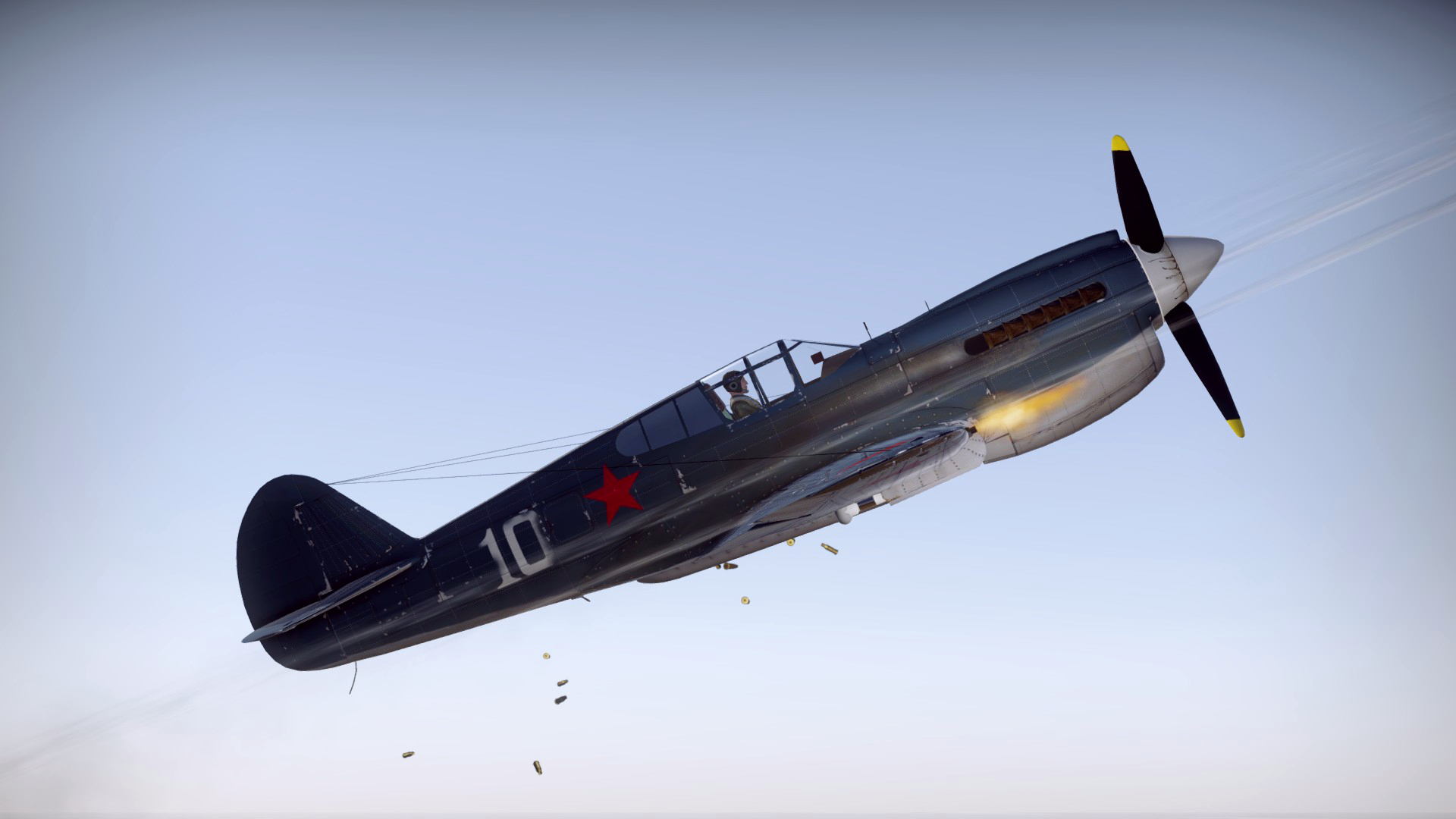
'2nd GvIAP P-40 of Lt. Col Boris Safanov, May 1942' skin by __StrafeMike__ | download here
Born in the village of Sinyavino in August 1915, Boris Froktistovich Safonov was raised in a peasant family before studying at an industrial school which prepared its students for jobs in factories. In 1931 he started flying lessons at a local flying club which soon stood him in good stead; two years later he joined the army as a pilot. In 1934, at the age of nineteen, he graduated from the 1st Aviation School of the VVS (roughly translated as Soviet Army Air Force) at Kacha before being posted to Belarus.
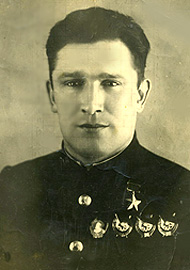 |
In 1940, Safonov was transferred to the Northern Fleet Air Force in the post of Flight Commander. By the time of the German invasion of the Soviet Union in June 1941, Captain Safonov was the Commanding Officer of the 72nd Composite Aviation Regiment, equipped with the I-16 fighter. He flew over 100 combat sorties in the I-16, claiming 17 enemy aircraft shot down whilst leading his regiment against the German invaders including the first German aircraft shot down by the Northern Fleet – a German twin engined bomber on June 24th.
In less than a month of hostilities, Safonov was presented with the Order of the Red Banner. Even more impressive, on September 16th his bravery and leadership was rewarded with the title of ‘Hero of the Soviet Union’, together with the much coveted Gold Star medal. However, as successful as he was as a fighter pilot, his rapidly spreading reputation was more for his leadership and ability to teach junior pilots in combat. By October 1941, Safonov had been promoted to Major and was now a household name across the Soviet Union.
In September 1941, Safonov was selected for an entirely different mission: instructing his pilots to fly the British Hawker Hurricane fighter. Shortly after the Soviet Union found itself allied to Great Britain in the struggle against Germany, convoys of supplies and equipment were shipped across from Britain to Murmansk to support their new ally. No.151 Wing was assembled to start the transition process of what would eventually be nearly 3000 Hurricanes exported to the Soviet Union. It consisted of veteran pilots of No.81 and No.134 Squadrons RAF, under the command of Wing Commander Ramsbottom-Isherwood.
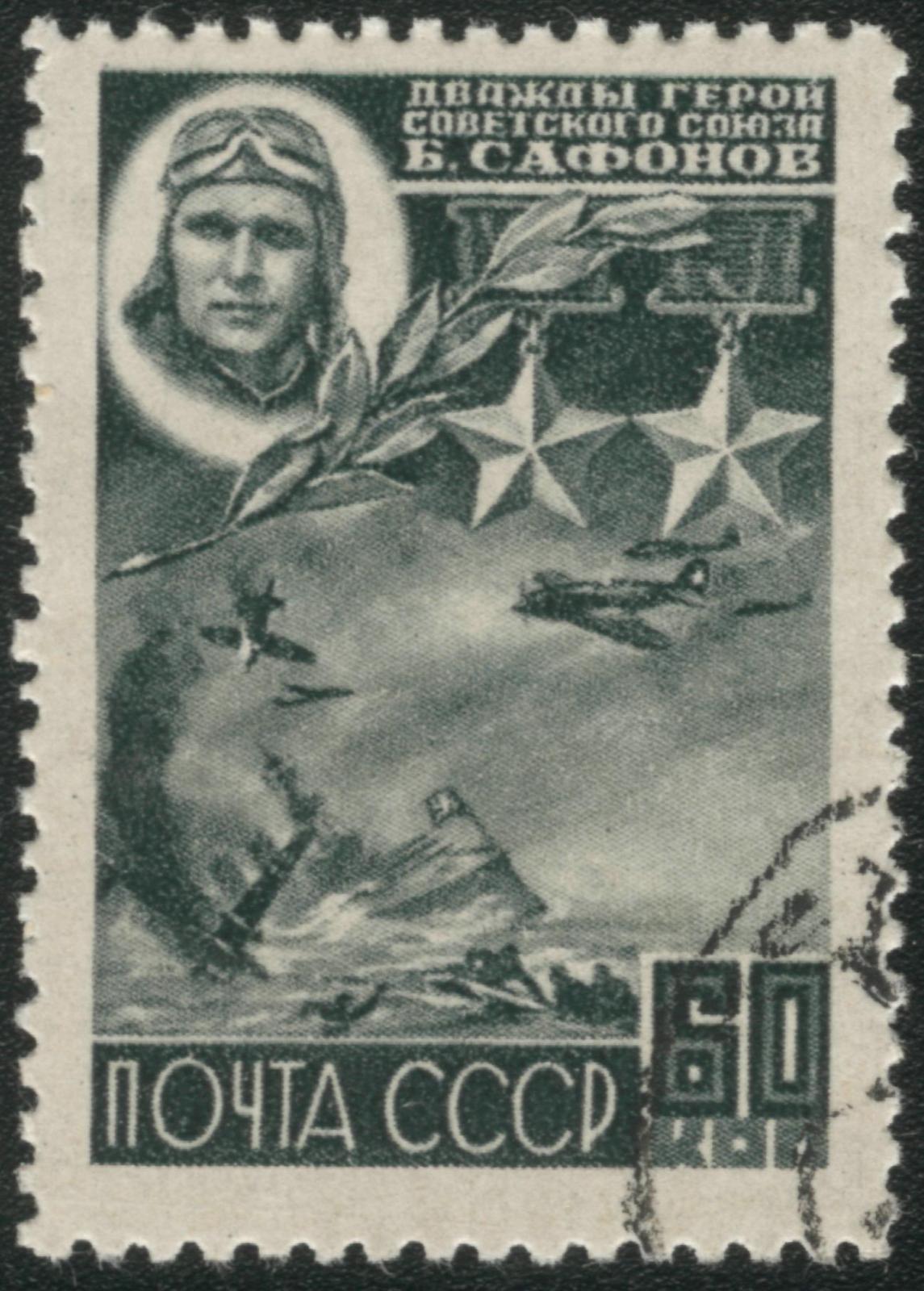 |
|
Commemorative stamp of Boris Safonov |
Safonov was one of three airmen selected to become the very first Soviet Hurricane pilots. Under the watchful eyes of Major General Kuznetsov, Commander of the Northern Fleet Air Force, the 39 RAF pilots and their 15 Hurricanes were used to train the Soviet airmen, most of whom were far more at home with the much smaller I-16. Employing the help of an ex-school mistress to translate the pilot’s notes and various checks, Safonov became the first Soviet pilot to fly a Hurricane on September 25th.
Shortly after he was the second pilot to showcase the fighter in front of Kuznetsov; less prepared than his studious comrade, Captain Kuharienko clawed his way into the sky at Vayenga airfield before a low level pass and then landing. Far more the consummate professional, Safonov was familiar with the correct operating procedures and took off without incident and flew three perfect circuits and landings. However, after completing his final landing he ran through a puddle and damaged the fighter’s wing flaps. Kuznetsov was not impressed.
With Safonov and a small number of his most experienced colleagues now qualified on type, the combined team of British and Soviet instructors set about training the pilots of the 72nd Regiment on the Hurricane. After this, the British pilots accompanied their new comrades on combat sorties against German aircraft, claiming a significant number of victories against the enemy. The British pilots later reported how astounded they were at the generous cash bonuses they were offered by the Soviet government for each kill. However, Wing Commander Isherwood gave all of their money to the RAF Benevolent Fund rather than promote rivalry within his ranks. Safonov, a keen pistol shooter, was often seen in marksmanship competitions against his British comrades whilst not flying.
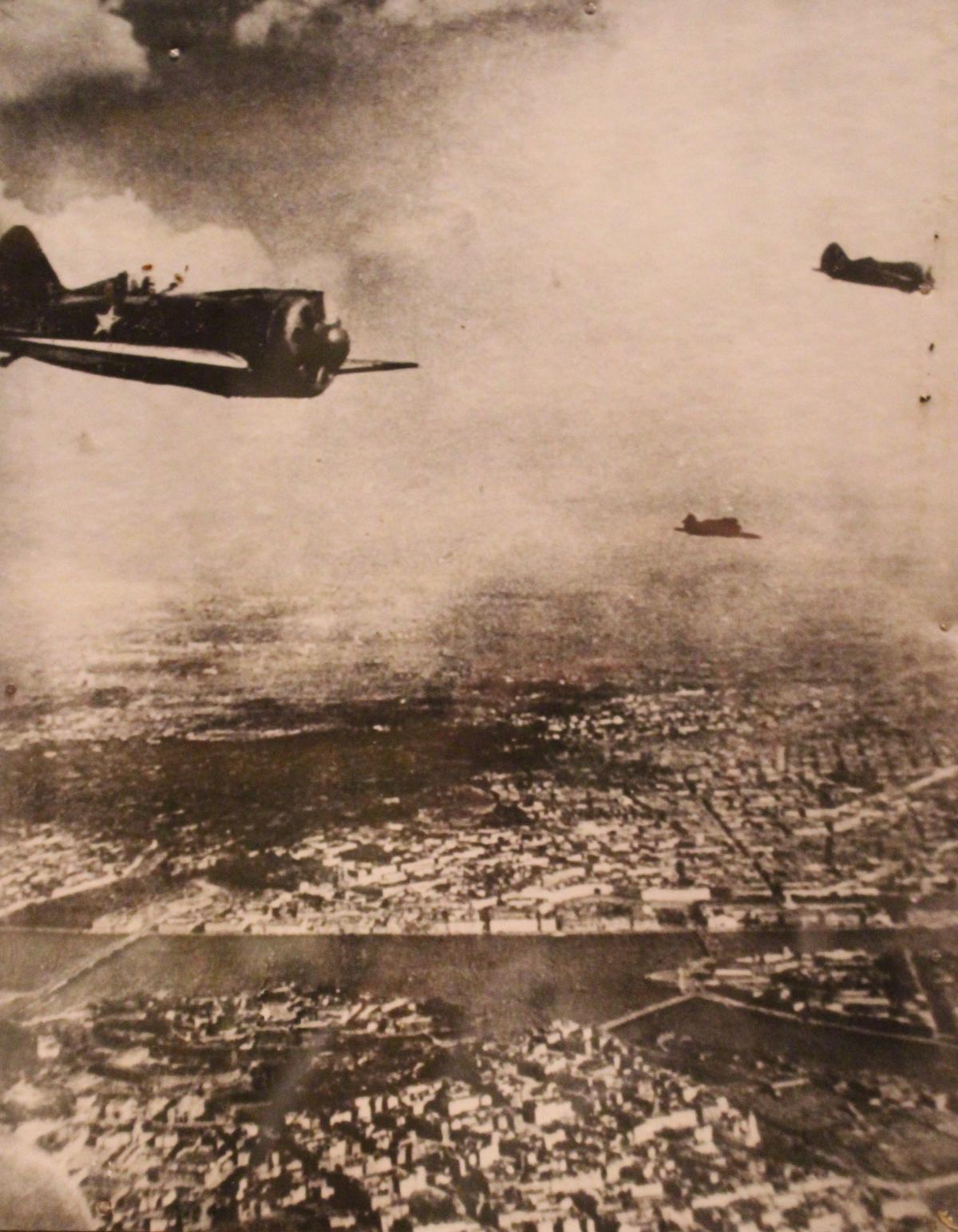 |
| Polikarpov I-16s over Leningrad |
After No.151 wing returned to Britain, Safonov was one of the chief instigators of upgrading the Hurricane’s armament. The light punch of the 0.303 inch machine guns was not, in Safonov’s opinion, nearly enough and so the Soviet Hurricanes were fitted first with heavier machine guns before upgrading to 20mm ShVAK cannons and fittings for ground attack rockets.
Accounts differ as to Safonov’s career progression after the 72nd Regiment. He was appointed Commanding Officer of the 78th Regiment during the winter of 1941-42, and in March 1942 was given command of the prestigious 2nd Guards Mixed Air Regiment as well as a promotion to Lieutenant Colonel. By this point the Soviet Union was receiving shipments of American aircraft and Safonov was flying the Curtiss P-40 on operational sorties.
Whilst the heavier armament was appreciated, the rugged American warhorse which dealt with the sands of North Africa did not fare well in the Arctic conditions of Northern Russia. Even more so than the Hurricane, the Soviet pilots found the P-40 to be unreliable and prone to engine failure, leading to it mockingly being referred to as the ‘miracle amongst the gliders’. Despite this, Safonov continued to lead his men and machines into battle throughout the spring of 1942, shooting down yet more German aircraft including a pair of Bf109s in a single engagement at the end of March.
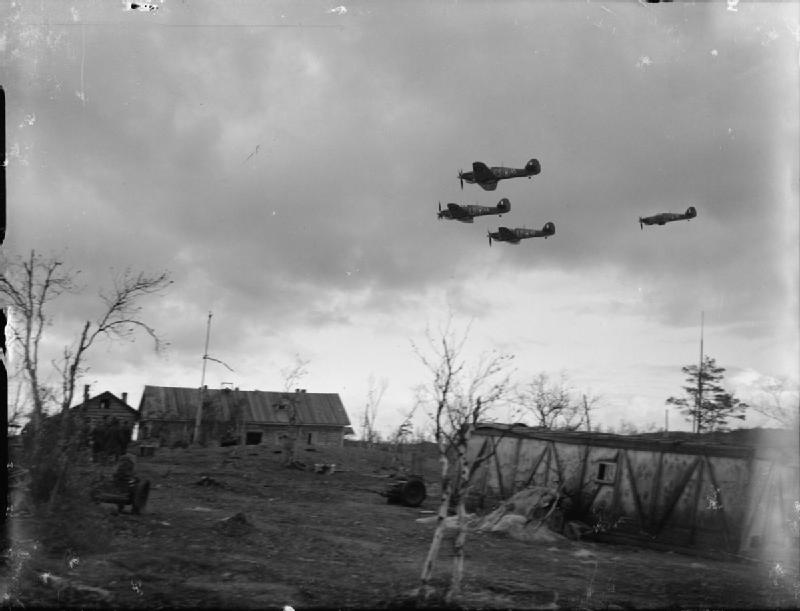 |
|
Four Hawker Hurricanes of No.151 Wing in flight over Northern Russia |
On May 30th, Safonov was leading two other fighters in an escort mission as an allied convoy neared Murmansk. The convoy was attacked by six Junkers 88s of I/KG 30. Safonov led the attack. Accounts from his wingmen and personnel onboard the convoy differ in detail and it is impossible to ascertain the exact details of the combat: Safonov shot down two of the Junkers 88s – he damaged a third and according to his wingmen that too was probably destroyed by Safonov. He reported being hit by return fire and positioning to ditch alongside one of the ships of the convoy. Again, accounts differ as to whether it was return fire from the Ju88s, engine failure of the P-40 or the sudden appearance of an enemy fighter. Whatever the cause, Safonov’s aircraft sank quickly and he was never found.
Twice decorated as a Hero of the Soviet Union, as well as the Order of Lenin and three Orders of the Red Banner, Lieutenant Colonel Boris Safonov was the first of the great aces of the Soviet Union, a hero in the skies at a time his country needed heroes the most. His final victory tally is in dispute but is reckoned to be between 18 individual kills plus a further 4 in groups over 234 combat sorties: however, the total may well be more than this. A serious aviator with a professional attitude to his trade, Safonov’s legacy was not the list of enemy aircraft he destroyed but the men he trained to fight and win in the war torn skies of Soviet Russia.
About The Author
 |
Mark Barber, War Thunder Historical Consultant Mark Barber is a pilot in the British Royal Navy's Fleet Air Arm. His first book was published by Osprey Publishing in 2008; subsequently, he has written several more titles for Osprey and has also published articles for several magazines, including the UK's top selling aviation magazine 'FlyPast'. His main areas of interest are British Naval Aviation in the First and Second World Wars and RAF Fighter Command in the Second World War. He currently works with Gaijin Entertainment as a Historical Consultant, helping to run the Historical Section of the War Thunder forums and heading up the Ace of the Month series. |



